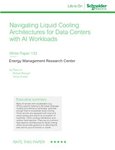Some have long understood how transformative real-time analytics in the cloud can be, especially for financial services industry. It provides the scale and agility that banks need to manage the vast amounts of data they are exposed to every day. It can also be a catalyst for change enabling new possibilities in technology adoption and application development.
Equally, banks can face challenges when migrating their time series and relational data and analytics to the cloud. It may be true that the financial services industry was arguably the first sector to really understand and harness the potential of real-time data analytics.
But that has created an arms’ race with banks needing to constantly re-evaluate and upgrade their data management and analytics stack to maintain a competitive edge.
Once upon a time series
The holy grail for data analytics in the financial services sector is a continuous cycle of analysis, insight and learning, although at present this is an aspiration rather than a reality for most companies. But time and speed matter, even when applied to the batch processing of data after markets close. In an industry where faster time-to-decision means the difference between profit or loss or a regulatory fine or legal compliance, data scientists and quants need faster access to data, along with the tools that enable them to quickly identify the patterns and insights that will inform the next day’s trading.
Currently, many existing data analytics technologies struggle to meet these demands in the time frames required to make a positive commercial difference. Too many firms are still relying on legacy systems and processes that can take days and weeks to develop and release new models and algorithms, rather than seconds or minutes. Time series data has, by its very nature, a specific and clear value attached to the moment in time that it is created and it’s that value that can be transformative to firms that can unlock it.
The cloud plays an important role here, enabling banks to take a phased approach to upgrade their data management and analytical capabilities but one that brings immediate benefits.
Cloud analysis or analyzing in the cloud?
Most, if not all, financial organizations agree on the transformative potential of the cloud. The benefits around scalability and efficiency are well understood and can be realized quickly, but the firms that are out in front are already optimizing their workloads and applications to take full advantage of what the cloud has to offer.
However, optimizing in the cloud is no small feat. Most understand that the more trade transaction and reference data that can be analyzed in these platforms, the better the quality of the insights. This is easier said than done, with many financial firms continuously grappling with the enormous amounts and various types of data. The ability to analyze data in real time relies on having the right infrastructure in the cloud to connect data in microseconds. But first banks need to have a strategy on how to build these systems. Questions on cost optimization, data migration and application reconfiguration need to be answered first and only then can banks truly start to see time-series data analytics at work.
Another key consideration is whether the cloud architecture is optimized for coding. Data analysts, quants and data scientists must be able to extract value from the data quickly rather than spending time simply managing and processing it. And they must be able to use preferred languages like SQL and Python to validate new algorithms in timescales to deliver a competitive advantage. It’s also important that the cloud is looked at as a key tool to re-architect, and ultimately, rebuild, data management and analytics systems. Before getting started on this though, it’s important to establish what the journey looks like and how any re-architectures or re-written applications will be integrated with their cloud vendor’s wider ecosystem of services.
Many banks recognize the transformative potential of time series data but often it’s their systems that are holding them back. A new approach to data analytics is likely what is missing, a shift towards seeing data as a continuous flow of insights. Along with the necessary capacity for analytics platforms to crunch the data at the rate that is needed to maintain business momentum. This is where a cloud optimization strategy can help financial firms to relook at their underlying architecture and make the necessary changes to continue analyzing data as close to real-time as they can.





